Top 10 States With The Highest Gas Prices In America
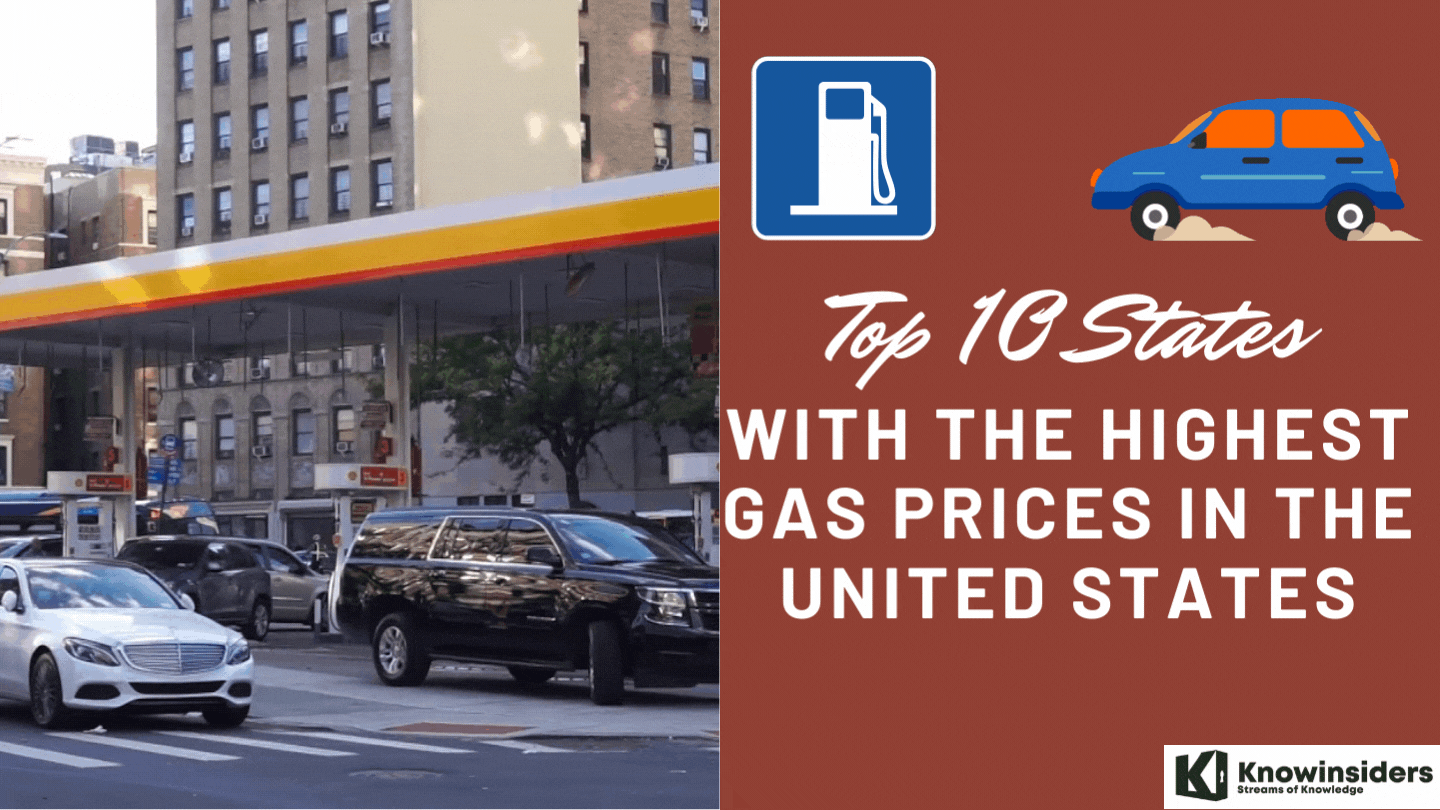 |
| Top 10 States With The Highest Gas Prices In The United States |
| Table Content |
It’s on the mind of everyone who has to drive: gas prices. The continuing effects of the pandemic and Russia’s war with Ukraine have delivered a one-two punch to the world’s supply of petroleum, causing prices at the pump to jump up to levels last seen in 2014.
Although prices are coming down from the peak reached in March, drivers in some states definitely have it worse than others. As of April 14, average prices for regular gasoline range from a low of $3.64 in Missouri to a whopping high of $5.72 in California, according to the national motor club AAA. The national average was $4.07, a 42% increase from last year.
Here are the 10 states with the highest gas prices in the US.
Related: Top 10 States With The Cheapest Gas Prices In America
Reasons Why Gas Prices Differ By State
1. Taxes
As that diagram on the right shows, the price of gas in the U.S. has four main components. About half the price is derived by the value of crude oil, followed by refining at 22%, taxes at 17%, and distribution and marketing at 10%. Because crude oil is traded on the global marketplace, it doesn't have a lot of impact on the difference between gas prices by state. In fact, top oil-producing states like Texas and North Dakota aren't among the states with the lowest gas prices because crude isn't the biggest driver of state-by-state difference.
Instead, one of the biggest drivers of the gas prices difference between states is taxes. The U.S. average for state gas taxes is currently $0.48 per gallon. However, a number of states have gas taxes well over that average, which pushes gas prices in that state much higher than average. In fact, there's a pretty direct correlation between states with the highest gas taxes also having the highest gas prices and vice versa for those with the lowest taxes and lowest prices. For example, gas taxes in South Carolina are the third lowest at just $0.35 per gallon while those in California are the second highest at $0.66 per gallon, contributing to some of the difference in prices between the two book-end states.
2. Distribution and marketing
Distribution and marketing costs also drive differences in gas prices. These are the costs for getting petroleum products from a refinery to a gas station and into a consumer's car. A factor driving these costs are pipeline tariffs, which are charged by pipeline operators to shippers that move gasoline in pipelines. Much like a toll road, the greater the distance traveled, the more expensive it is to ship the gas. It's one reason why southern states South Carolina, Mississippi, Alabama, Tennessee, and Louisiana have the lowest gas prices in the country as they are closer to America's oil-refining center along the Gulf Coast -- they benefit from lower distribution costs as the gas doesn't have to travel as far. Hawaii, on the other hand, has the second-highest gas price in the country due in part to higher transportation costs as its gasoline needs to be imported by ship, which is much more expensive than gas shipped via pipelines.
3. Refining
A third factor is the actual cost of refining oil into gasoline, which can vary greatly according to a refinery's location. California, for example, is home to some of the stiffest environmental regulations in the country, which are higher than federal regulations and add to the cost of refining gasoline in the state. Furthermore, its refineries are almost always running at full capacity just to meet demand so when one does get shut down, as happened earlier this year, it leads to a spike in the state's gas price.
Meanwhile, states that either have less stringent regulations on their refineries, or import a bulk of their gas from low-cost refining states, tend to have lower gas prices. That's actually another driving force behind lower gas prices in the Southeastern U.S. as Gulf Coast states Texas and Louisiana have low-cost refineries, which is why both are among the top ten states with lowest gas price. Further, both states export their gas to neighboring southern states, including South Carolina, for example, which is when combined with lower taxes is why several states in the south have much lower gas prices than their northern or western peers.
Gas Prices Are At Record Highs In Every State
Americans continue to fill up at the pump—and the continued demand means cooling gas prices are nowhere in sight.
The national average price of gas is now a record $4.91 per gallon, according to AAA, an increase of more than 60 cents from just a month ago.
Every state has an average gas price above $4 per gallon, according to AAA data.
Geopolitical instability is adding to crude oil price volatility. At the end of May, the European Union announced it would ban around 90% of oil imports from Russia due to the war in Ukraine—and it continues to rattle crude oil markets and push prices upward.
It’s unclear when consumers will feel relief at the pump, which is adding stress as they make summer plans. A Forbes Advisor poll found that the cost of travel, driven in part by gas prices, affects plans for 54% of summer vacationers.
In April, the U.S. Energy Information Administration’s (EIA) Short-Term Energy Outlook predicted the average price of oil to fall by the end of this year—but noted its price forecast was highly uncertain due to existing and future sanctions on Russia and how it will impact the global oil market.
President Joe Biden claimed in a recent Wall Street Journal op-ed that his administration had led the largest release of oil from global oil reserves in history. Despite such a large release, gas prices continue to balloon to record levels.
Some states are now stepping in to provide rebate payments for residents to help alleviate the ongoing financial pain of inflated prices across the board.
List of top 10 states with the highest gas prices in the U.S
1. California: $5.98
2. Hawaii: $5.31
3. Nevada: $5.17
4. Washington: $5.03
5. Oregon: $4.99
6. Alaska: $4.88
7. District of Columbia: $4.83
8. Illinois: $4.82
9. New York: $4.75
10. Arizona: $4.75
What are the states with the highest gas prices in the United States?
1. California
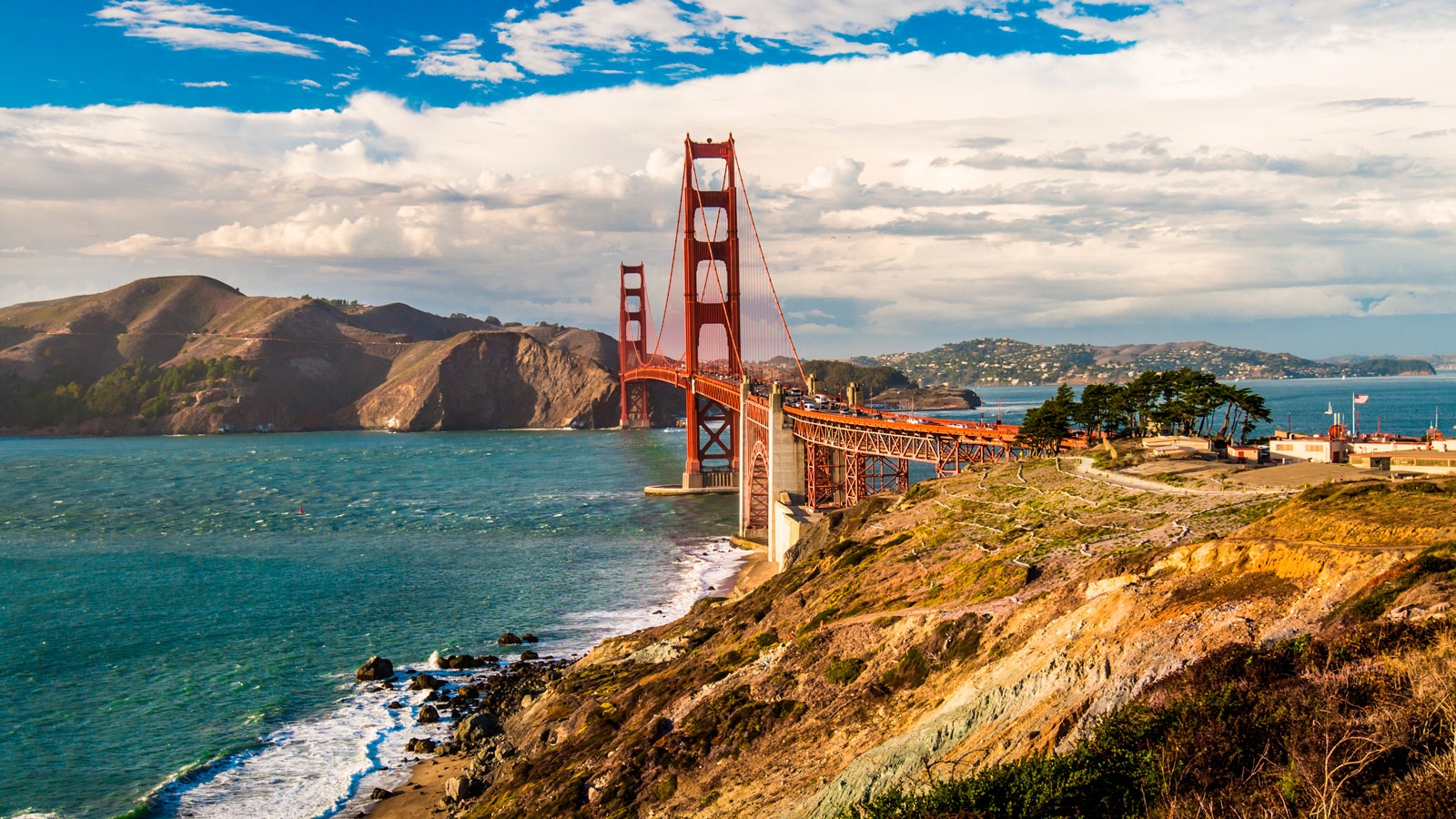 |
| Photo: Indochinapost |
California is a state in the Western United States. California borders Oregon to the north, Nevada and Arizona to the east, the Mexican state of Baja California to the south; and has a coastline along the Pacific Ocean to the west. With over 39.2 million residents across a total area of approximately 163,696 square miles (423,970 km2), it is the most populous and the third-largest U.S. state by area. It is also the most populated subnational entity in North America and the 34th most populous in the world. The Greater Los Angeles area and the San Francisco Bay Area are the nation's second and fifth most populous urban regions respectively, with the former having more than 18.7 million residents and the latter having over 9.6 million.
The state's extremely diverse geography ranges from the Pacific Coast and metropolitan areas in the west to the Sierra Nevada mountains in the east, and from the redwood and Douglas fir forests in the northwest to the Mojave Desert in the southeast. The Central Valley, a major agricultural area, dominates the state's center. Although California is well known for its warm Mediterranean climate and monsoon seasonal weather, the large size of the state results in climates that vary from moist temperate rainforest in the north to arid desert in the interior, as well as snowy alpine in the mountains.
Transportation
Transportation, primarily by automobile and airplane, is in part both the cause and the result of the restless mobility of Californians, who tend to move their residences often and travel considerably. California has one of the greatest concentrations of motor vehicles in the world and the most extensive system of multilane freeways. (The rise of the freeway system after World War II coincided in Los Angeles with the demise of a 1,200-mile [1,900-km] interurban rail system that had once been the longest such system in the country.) Arterials reaching from San Diego almost 500 miles (800 km) northward through Los Angeles and the Central Valley continue without any traffic signals or stop signs. Freeway construction has declined since the 1970s, however, because of public opposition.
As in most North American urban areas, light-rail transit systems were largely discontinued in California cities after World War II. Because of increasing traffic congestion, however, many have been reintroduced or newly constructed. The Bay Area Rapid Transit (BART) system in and around San Francisco was constructed in the early 1970s and expanded in the following decades in response to growth in outlying areas. A San Diego trolley system, first built in the late 1970s as a link to the Mexican border, was extended in the late 1980s. The lack of a conventional urban core in Los Angeles, along with comparatively low population densities, had made it difficult to construct modern rapid-transit systems there, but work on a subway system in Los Angeles began in the 1980s. By 2003 a network of metro and light rail lines ran through the city, and there are rail links between downtown Los Angeles and many outlying areas, including major tourist sites, airports, and beaches. Commuter rails also run to nearby cities and counties. With an ever-growing population, more attention was being given to the development of mass transit systems in California in the early 21st century.
The transport of goods in California is carried out predominantly by trucks, but the intricate canals and waterways of the Sacramento River delta are also used to transport freight. Maritime shipping across the Pacific basin is centred at the Long Beach–Los Angeles ports, whose combined volume of cargo is several times greater than that handled by the Oakland, San Francisco, and Richmond ports in northern California. Long Beach is one of the world’s most important cargo ports.
Air commuting within California has increased significantly. The air corridor connecting San Francisco, Los Angeles, and San Diego boasts greater traffic than the one that links Washington, D.C., New York City, and Boston on the East Coast. Air traffic congestion has become critical, but not so dire as that of the ground traffic near major California airports.
Why California Gas Prices Are Especially High
California’s high fuel prices are partly because of taxes as well as regulatory programs aimed at reducing greenhouse gas emissions. Together, they added about $1.27 to the cost of a gallon of gas last month, according to a calculation by the Western States Petroleum Association.
About 40 percent of that cost comes from the state’s gasoline tax. California taxes fuel at 51.1 cents per gallon, the second-highest amount in the nation after Pennsylvania, according to the Federation of Tax Administrators.
Though the current prices are definitely high, they aren’t breaking records if you take into account inflation, writes Michael Hiltzik, a Los Angeles Times columnist.
In 2008, the last major run-up in gas prices, the cost of a gallon in California reached $4.588. If you translate that into today’s dollars, it would be $5.83, far higher than the current price at the pump.
How to save gas driving in California
Tip #1: Watch Your Speed
You can assume that each 5 mph you drive over 50 mph is like paying an additional $0.38 per gallon for gas, according to fueleconomy.gov.
"While each vehicle reaches its optimal fuel economy at a different speed (or range of speeds), gas mileage usually decreases rapidly at speeds above 50 mph," the website says.
For a 2021 Ford Escape, with gas prices at $5/gallon, it costs $1.13 more per gallon to drive 75 mph versus 65 mph.
Tip #2: Clear The Roof
Hauling cargo on your roof increases aerodynamic drag (wind resistance) and lowers fuel economy.
A large, blunt rooftop cargo box, for example, can reduce fuel economy by around 2% to 8% in city driving, 6% to 17% on the highway, and 10% to 25% at interstate speeds (65 mph to 75 mph).
In the example above, that could add up to $0.85 per gallon of gas to the cost of driving.
Tip #3: Lose The Weight
Avoid keeping unnecessary items in your vehicle, especially heavy ones. An extra 100 pounds in your vehicle could reduce your gas mileage by about 1% or add $.05 - $.06 per gallon.
One added note, it is best to avoid idling for extended periods of time as this can cost, on average, $0.04 per minute for gas.
2. Hawaii
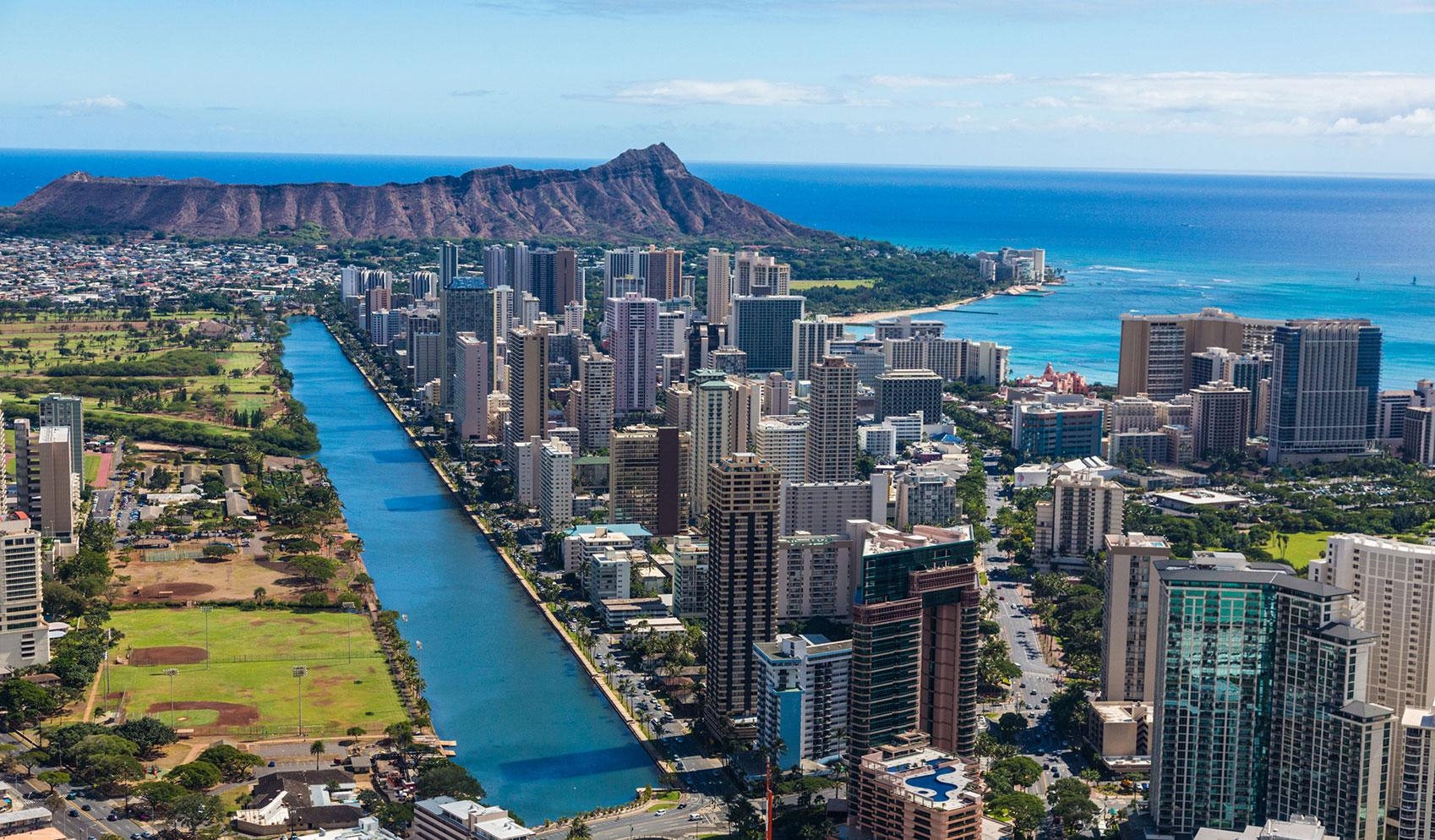 |
| Photo: Go Hawaii |
Hawaii is a state in the Western United States, located in the Pacific Ocean about 2,000 miles from the U.S. mainland. It is the only U.S. state outside North America, the only state that is an archipelago, and the only state in the tropics. Hawaii is also one of several U.S. states that were independent nations prior to joining the Union.
Historically dominated by a plantation economy, Hawaii remains a major agricultural exporter due to its fertile soil and uniquely tropical climate in the U.S. Its economy has gradually diversified since the mid-20th century, with tourism and military defense becoming the two largest sectors. The state attracts tourists, surfers, and scientists from around the world with its diverse natural scenery, warm tropical climate, abundance of public beaches, oceanic surroundings, active volcanoes, and clear skies on the Big Island. Hawaii hosts the U.S. Pacific Fleet, the world's largest naval command, as well as 75,000 employees of the Defense Department.
Transportation
A system of state highways encircles each main island. Only Oʻahu has federal highways, and is the only area outside the contiguous 48 states to have signed Interstate highways. Narrow, winding roads and congestion in populated places can slow traffic. Each major island has a public bus system.
The Hawaii Superferry operated between Oʻahu and Maui between December 2007 and March 2009, with additional routes planned for other islands. Protests and legal problems over environmental impact statements ended the service, though the company operating Superferry has expressed a wish to recommence ferry services in the future. Currently there is a passenger ferry service in Maui County between Lanaʻi and Maui, which does not take vehicles; a passenger ferry to Molokai ended in 2016. Currently Norwegian Cruise Lines and Princess Cruises provide passenger cruise ship services between the larger islands.
At one time Hawaii had a network of railroads on each of the larger islands that transported farm commodities and passengers. Most were 3 ft (914 mm) narrow gauge systems but there were some 2 ft 6 in (762 mm) gauge on some of the smaller islands. The standard gauge in the U.S. is 4 ft 8+1⁄2 in (1,435 mm). By far the largest railroad was the Oahu Railway and Land Company (OR&L) that ran lines from Honolulu across the western and northern part of Oahu.
Why Do Hawaiians Pay So Much at the Pump?
When it comes to increasing gas prices, Hawaii is closely following California. Most parts of Hawaii have been experiencing over $5 a gallon costs. Why do Hawaiians pay so much at the gas pump?
As you might expect, most of the added costs go to taxes. In Hawaii, more than 50 cents per gallon goes to taxes. The Federal Excise Tax gets about 18 cents while the state and local sales taxes tacks on another 16 cents. More than that, the counties themselves add about 16 to 23 cents, depending on where you live. The excise taxes tend to adjust with inflation, so gas prices get even more expensive as the geopolitical tension between Ukraine and Russia continues.
Overall, there are three significant reasons why Hawaii gas prices are so high (or the country in general):
- Even before the conflict between Ukraine and Russia was putting pressure on the energy supply, the rising prices in energy, in general, is the main contributor to the fastest inflation in 40 years, according to The New York Times.
- The economy is still reeling and recovering from the effects of the pandemic on a global scale. For over a year now, we’ve heard about the bottlenecks in the supply chain. However, in reality, another core factor that adds to inflation is the price of crude oil.
- Crude oil prices are affected by a number of factors, including inventories, supply and demand, seasonality, and financial market predictions. In addition, federal and local state taxes also play a significant role in the rising fuel cost.
Advice for using less gas driving in Hawaii
Whether or not you have a fuel-efficient vehicle, you can do a few simple things to help your car better conserve gas:
Keep your tires inflated properly – Simply put, the more underinflated your tires are the more mileage per gallon of gas you will lose. Be sure that your tires are inflated to the level recommended by the manufacturer.
Slow down – This should not be an issue in Hawaii because of how slowly the people in front of you tend to drive but the faster you drive the more gas you will burn. So, take it nice and easy like the other drivers in Hawaii routinely do.
Forget idling – There really is no reason to idle in Hawaii. Normally, people do it to warm up their car or to keep it warm. In Hawaii temperatures will always be either warm or hot, so idling makes no sense when you consider how much gas it wastes.
Lose the extra weight – The more a car weighs, the harder the engine will need to work, the more fuel it will burn at a faster rate. This is why larger cars like Escalades burn more fuel then smaller cars. So, if you have anything in your car that you can afford to take out, do so.
Get your car serviced – Making sure that your engine is running properly and at its top efficiency is critical to maximizing how well your car can conserve gas. Always get your car checked out by a mechanic when your check engine light comes on.
3. Nevada
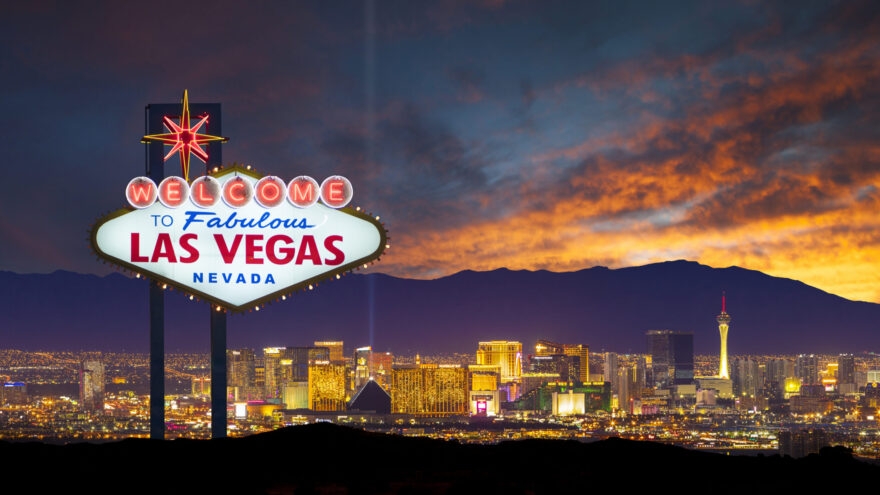 |
| Photo: iStock |
Nevada is a state in the Western region of the United States. It is bordered by Oregon to the northwest, Idaho to the northeast, California to the west, Arizona to the southeast, and Utah to the east. Nevada is the 7th-most extensive, the 32nd-most populous, and the 9th-least densely populated of the U.S. states. Nearly three-quarters of Nevada's people live in Clark County, which contains the Las Vegas–Paradise metropolitan area, including three of the state's four largest incorporated cities. Nevada's capital is Carson City while the largest city is Las Vegas.
Transportation
Nevada’s vast size makes it heavily dependent upon air transportation. There are numerous airports and airfields, and both Las Vegas (McCarran International Airport) and Reno (Reno-Tahoe International Airport) have been designated as international ports of entry.
Two major freight railroads cross the state. Amtrak passenger rail service connects Nevada with neighbouring states. Public roads include primary and secondary highways as well as municipal and rural roads. Two of the federal highways are part of the interstate system.
The three major transportation and trade centres of the state are Reno, the principal distributive centre for northwestern Nevada and northeastern California; Elko and Ely, in northeastern Nevada; and Las Vegas, the commercial centre for southern Nevada and nearby areas of Utah and Arizona. Warehousing and trucking industries flourish because of Nevada’s strategic geographic location and the “free port” tax exemption for goods continuing in transit. In the Reno and Las Vegas areas, foreign trade zones—free-trade zones that include the airports and allow a variety of goods to be imported duty-free or with reduced excise taxes—have increased the region’s attractiveness to international business interests.
Why does Nevada have highest gas prices in the US?
Primarily, it boils down to supply and demand.
U.S. oil production is just under 12 million barrels a day, 8 percent lower than in 2019, according to CNN. Experts say the industry is unlikely to get back to that pre-pandemic level this year, the network reported, due to a shortage of workers and equipment as well as fresh memories of the pandemic’s early days when oil prices briefly went negative.
“Oil companies don’t set the market prices; people do, by filling up their tanks,” said Patrick De Haan, petroleum analyst for GasBuddy, which tracks gasoline prices around the U.S.
Analysts say that nearly the entire rise of the last week — about 55 cents a gallon nationwide, on average — can be linked to anticipation that eventually western countries would ban Russian crude, further shrinking their already tight supplies.
“The U.S. doesn’t need Russian oil per se, but the world and particularly Europe are dependent on it,” said Tom Kloza, an analyst for the Oil Price Information Service.
According to government figures, the U.S. imported 245 million barrels of oil from Russia last year, or 8 percent of all U.S. oil imports. That is less than the United States imported from Canada or Mexico but more than it took from Saudi Arabia.
But West Coast oil refineries are Russia’s best U.S. customers. Nearly half of Russian oil shipped into the U.S. last year, or close to 100,000 barrels a day, ended up primarily in California, Washington and Hawaii, refinery consultant Andrew Lipow said.
Further complicating the supply outlook: California oil production is down 70 percent from the 1986 peak, Lipow said, and “the prospects for increased drilling in California are slim due to the regulations governing that activity.”
Gas saving tips in Nevada
Increase the Pressure
As drivers, we tend to prefer a low-pressure commute as we zip around town. However, your car’s engine does not do so well when your tire pressure is too low. In fact, low tires make your engine work harder, which in turn reduces fuel economy.
You can offset this negative impact by checking your tires frequently to ensure:
- Tire pressure is set at manufacturer recommended psi
- Valve stems are not leaking
- Nothing has punctured the tire causing air to escape
Clogged Engines Kill
Have you heard the saying “you only get out what you put in?” Well, it applies to your vehicle too. If you take the time for proper maintenance, you can keep your car from having to work harder. The side benefit is that you not only extend the longevity of your automobile, but you also improve your fuel mileage.
Here are just a few car parts you may want to have checked out if your mileage has started to decrease between refills:
- Old spark plugs
- Dirty fuel, oil, air, and transmission filters
- Faulty oxygen sensor
Additionally, you may want to get your oil changed if it’s been more than 5,000 miles since you last had it done.
Slow Your Roll
Did you know that gas mileage usually decreases at speeds over 50 mph? It’s true, speeding and sudden accelerations are your ticket to the fast lane of quickly burned gas. In fact, the EPA states that it can actually lower your gas mileage by roughly 10% to 40% in stop-and-go traffic and 15% to 30% at highway speeds.
Here’s an approximated breakdown to help illustrate how speeding can reduce your fuel economy and pocket money:
every 5 mph driven over 50 mph = an additional $0.20 per gallon for gas
By slowing your roll and gradually increasing your speed – instead of flooring the gas pedal to get somewhere faster – you allow your engine to operate more efficiently. Thus, saving fuel and a potentially costly speeding ticket.
Shed Some Weight
For every 100 pounds removed from your vehicle, you could see an increase in fuel efficiency up to 2%. As not all vehicles weigh the same, the percentage varies based on the overall weight of your vehicle.
You can help shed some weight by:
- removing items you don’t use daily (roof ski racks, golf clubs in trunk, etc.)
- driving around with less fuel in your tank (within reason; see below.)
- trading your vehicle in for a smaller version
Don’t Fall Below ¼ Tank
Yes, less fuel in your gas tank means less weight to haul around. However, there are limits to how low you can go.
For instance, driving around with a near-empty tank of gas puts extra strain on your fuel pump. This strain occurs because the only thing left to pull into the engine is air, debris, and water that accumulates in the tank. These conditions can cause the fuel pump to overheat, clog, and ultimately fail.
After that, you can be stuck with the expense of having to replace the fuel pump assembly or even your catalytic converter. Both repairs would cost you a lot more than the amount to keep your fuel gage above the ¼ mark.
Key takeaway: fill up when you get to a ¼ tank of gas. It could save you a bundle.
Buddy Up & Seek Alternate Routes
Not only does carpooling with a buddy to run errands, work, and social engagements save fuel, it also gives you a chance to catch up. However, when carpooling is not an option, seek out alternate routes to avoid heavily backed up roadways.
If you are new to Las Vegas, use a traffic app on your phone prior to heading out to see what direction you should take.
Why? Because getting stuck in a traffic jam sucks away the lifespan of your vehicle and fuel. By braking constantly and accelerating at a slow rate you end up draining your tank faster than you would while driving at a constant speed. Plus, even though you are sitting idle, you still burn fuel.
4. Washington
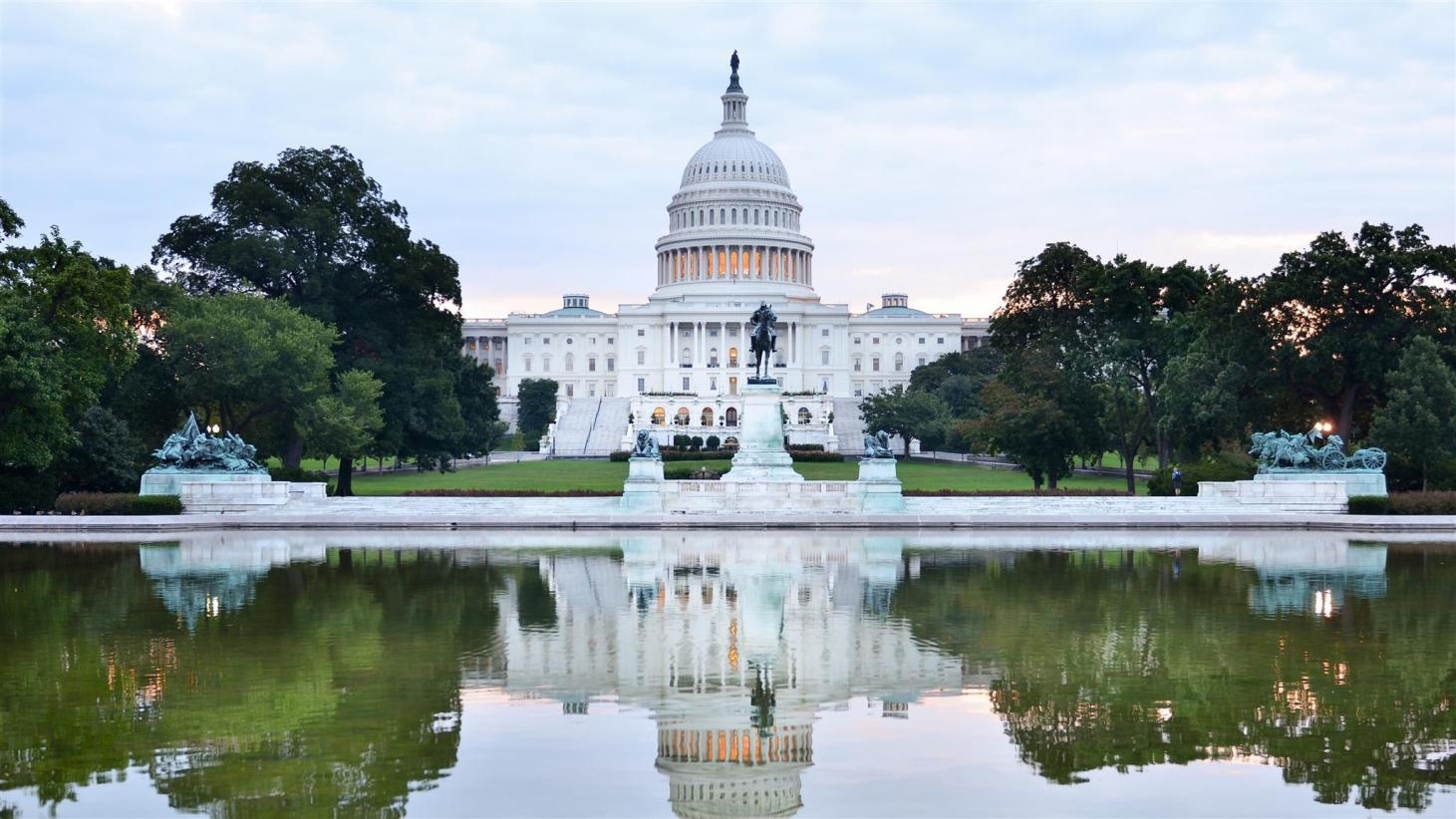 |
| Photo: Agoda |
Washington, officially the State of Washington, is a state in the Pacific Northwest region of the Western United States. Named for George Washington—the first U.S. president—the state was formed from the western part of the Washington Territory, which was ceded by the British Empire in 1846, by the Oregon Treaty in the settlement of the Oregon boundary dispute. The state is bordered on the west by the Pacific Ocean, Oregon to the south, Idaho to the east, and the Canadian province of British Columbia to the north—was admitted to the Union as the 42nd state in 1889. Olympia is the state capital; the state's largest city is Seattle. Washington is often referred to as Washington state to distinguish it from the nation's capital, Washington, D.C.
Transportation
Harbours on Puget Sound and the outer coast afford year-round access to world ocean routes, and a state ferry system serves the San Juan Islands and Canada’s Vancouver Island. Navigation locks allow boats to pass between Puget Sound and Lake Washington in Seattle. Barges carry grain and raw materials along the Columbia-Snake route.
Airlines link the state’s cities with one another and with transcontinental and world air routes. Seattle-Tacoma International Airport ranks among the leading U.S. airports in international passenger travel.
The state has a well-developed system of highways and interstate freeways. Pontoon bridges span Hood Canal on the Olympic Peninsula and Lake Washington in Seattle. Select areas of Seattle and Tacoma are serviced by a light-rail system, which also runs from Seattle to Seattle-Tacoma International Airport. Railways crisscross the state but rank behind trucks in freight transport. Several Amtrak passenger routes provide rail service across the state. Pipelines move oil and natural gas from out of state and distribute refined products.
Washingtonians pay more for gas than most of the country. Why?
Some oil industry analysts and officials say the premium Washingtonians pay for regular gasoline reflects a greater imbalance between demand and supply along the West Coast. They say gas has been in shorter supply due in part to the closure of several California refineries.
“If I took the population of the states that are bordering the Pacific Ocean, and I look at refining capacity, there’s no question that those markets are tighter than they used to be,” said Tom Kloza, global head of energy analysis for the Oil Price Information Service, a Dow Jones company that collects fuel pricing information for many clients, including AAA.
“It really always comes back to market forces and choices consumers make when selecting the stations to buy fuel from,” said Kevin Slagel of the Western States Petroleum Association.
But the higher fuel costs in Washington, Oregon and California have long triggered government scrutiny.
The Washington Attorney General’s Office monitors gasoline markets, publishing a quarterly gasoline report that notes producers and retailers are free to charge whatever price for their product they choose so long as they do not collude or engage in unfair or deceptive practices. As far back as 1977, the office alleged that oil companies fixed prices and artificially created product shortages. The ensuing 15-year legal battle resulted in a settlement of more than $150 million. Since then that office has launched other investigations, and challenged some oil-company acquisitions over antitrust concerns.
In 2019, the California Energy Commission, at the request of Gov. Gavin Newsom, conducted an investigation of high state gas prices. The commission concluded in a report that prices had climbed as retailers increased their margins above the national average, including higher-priced brands that raised margins “far beyond competitors.”
“The overall California increase in retail margins, above that experienced by the rest of the U.S., has resulted in California gasoline consumers paying an estimated additional $1.5 billion in 2018 and $11.6 billion over the last five years,” the report stated.
Gas prices are surging as automobile manufacturers are launching a major shift to electric vehicles.
In the Puget Sound region, electric car dealers report that demand for the vehicles far outstrips available supplies, which have been severely crimped by disruptions of the supply chain.
In Washington, the fuel for the vehicles is produced by utilities that operate under very significant price constraints.
More than half the state’s power is produced by public utilities, such as Seattle City Light. They are required to be based on the actual costs of providing power, including investments in operations, capital improvement and debt service.
Electricity also is produced by regulated private utilities such as Puget Sound Energy. These utilities must submit their rates for approval to the Washington State Utilities and Transportation Commission, which is charged by the Legislature to ensure customers get “reasonable rates” and companies earn a fair profit.
The prices at fast-charging stations, such as those operated by Tesla or Electrify America, do not fall under state regulation. But so long as electric car owners charge at their home or at a charging station installed by a utility, the prices reflect those of a nonprofit or regulated utility.
Tips to save gas driving in Washington
Perform routine maintenance
Your car needs the right proportions of air and fuel to run efficiently. A well-maintained vehicle will run at its best.
Keep tires rotated and inflated to ideal pressure
To help evenly distribute the wear and tear on your tires, the recommendation is to have your tires rotated every 5,000 to 8,000 miles. Under-inflated tires tend to decrease mileage. (They're dangerous, too.) Check manufacturers' recommendations and make sure your tires are inflated to the maximum PSI, measured when cold.
Glide into your stops
As you approach a stop sign or light, take your foot off the gas pedal earlier and let your car downshift before applying the brake.
Combine short trips
Warm engines run more efficiently than cold ones. Planning your errands so you travel in a sequence instead of backtracking is an efficient way to save time, as well as gas.
Drive at moderate speeds
While every vehicle is different, mileage decreases quite rapidly over 50 mph in most cases. To save gas, stay at or under the speed limit, and drive at a consistent rate of speed. Use cruise control on long trips.
Drive friendly
Aggressive driving habits such as gunning the engine, speeding, screeching around corners and jamming on the gas pedal are major fuel wasters. Avoid fast acceleration and generally drive in a measured and moderate fashion to achieve top fuel savings.
5. Oregon
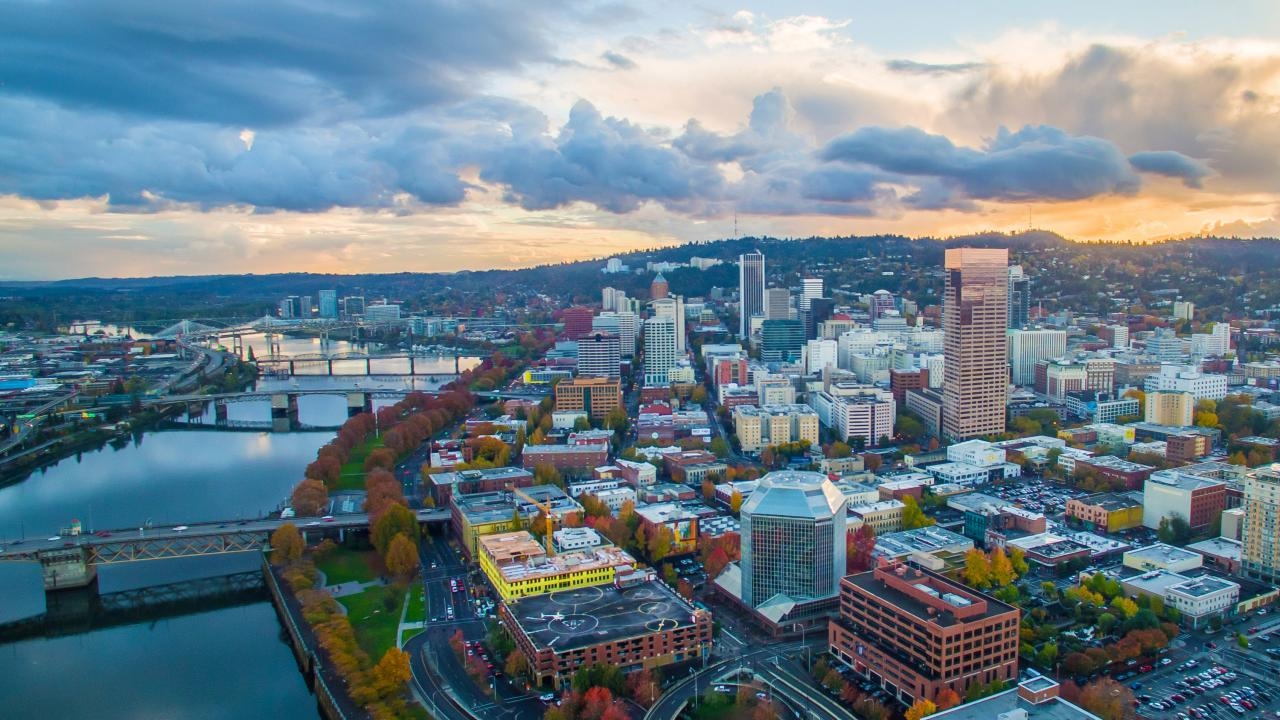 |
| Photo: Visit the USA |
Oregon is a state in the Pacific Northwest region of the Western United States. The Columbia River delineates much of Oregon's northern boundary with Washington, while the Snake River delineates much of its eastern boundary with Idaho. The 42° north parallel delineates the southern boundary with California and Nevada.
Transportation
In addition to an extensive network of highways and roads under the jurisdiction of the state, the federal government, and counties and municipalities, Oregon has forest development roads, national park roads, and military and Indian reservation roads that are controlled by federal agencies and various local governments. Railroads provide north-south and east-west routes, and light rail serves commuters in the major cities of the Willamette valley. Amtrak provides passenger rail service connecting Klamath Falls and the cities of the Willamette valley with neighbouring states. The largest airport is Portland International Airport; other significant commercial airfields are at Eugene, Medford, Pendleton, Klamath Falls, and Redmond.
Throughout the state’s history, water transportation has been important. Six of the port districts are located on the Columbia above the head of deep navigation, where barge traffic is composed principally of grain and petroleum downstream and cement and structural steel upstream. Portland, open to oceangoing vessels, is by far the most important port. The other port districts stretch along the Oregon coast and up the Columbia on the deep-draft channel. Portland, Astoria, Newport, and Coos Bay have regular shipments to and from foreign countries.
Why is gas expensive in Oregon?
Regardless of how the economy is doing, the Pacific Northwest usually has higher gas prices than almost every other state. There are very specific reasons why and they are difficult to change.
The primary factor for relatively high gas prices in Oregon and Washington had to do with limits on the fuel supply infrastructure.
Drivers in Clark County west of I-5 see signs warning the Olympic Pipeline is buried underground. After traveling under the Columbia River, the pipeline reaches tank farms in Northwest Portland on the Willamette River. That’s where 630 storage tanks hold 90% of Oregon’s petroleum supply, including gas, diesel and all the jet fuel for Portland International Airport, according to a study for Multnomah County and the City of Portland.
It’s where tanker trucks fill up and carry fuel to gas stations across the region — and there is little alternative.
“There’s not enough refining capacity to meet demand in the West Coast. So not only are prices elevated often in Washington and Oregon, but California as well,” said Patrick De Haan, the head of petroleum analysis for GasBuddy.
The petroleum comes from refineries near Bellingham and then is pumped south to Portland. There are no other pipelines on the west side of the Cascades. Though there are pipelines on the east side, they don’t cross the mountains to bring fuel to the west side.
“There’s essentially no relief valve,” De Haan said. “If a refinery does encounter a problem, there’s no other refinery to pick up the slack. Products then have to start flowing in from Asia if there is an issue and that can take weeks.”
Gabriel Zirkle, the president of the Oregon Fuels Association, said, “We’re a bit of an island unto ourselves.”
How to deal with Oregon’s gas prices
If you live in the Pacific Northwest, you’re likely more prepared to deal with high gas prices than any other resident in the US. But when you’re paying over $5 per gallon for regular, it’s high time to start looking for extra ways to save.
Let’s take a look at simple things you can do to save money at the pump and mechanic:
Keep up with regular maintenance: When an oil change costs more than a tank of gas, it can be tempting to skip it—but this is a bad idea. When you skimp on maintenance, your car doesn't run as efficiently as it otherwise could, costing you more in the long run.
Take care of the basics yourself: Working on a car can be intimidating, but many of the routine maintenance tasks of vehicle ownership are surprisingly simple. Whether it’s changing air filters, swapping wiper blades, or replacing spark plugs, you can even turn vehicle maintenance into a family affair by getting the kids involved!
Lower your car payment: Your car payment is likely one of the biggest expenses you’ve got, so cutting it down can be a huge help for your wallet. You already know Jerry can save you hundreds a year on car insurance, but Jerry users can benefit from our refinance services as well!
Consider going electric or hybrid: Electric cars used to only be for the super-rich, but now they’re well within reach of most budgets. If not, a hybrid or plug-in hybrid can also be a great option that not only saves you money on gas but possibly remove the need to purchase gas altogether!
Review your car insurance: If you’re not reshopping your coverage on the regular, you’re likely paying too much for your policy.
6. Alaska
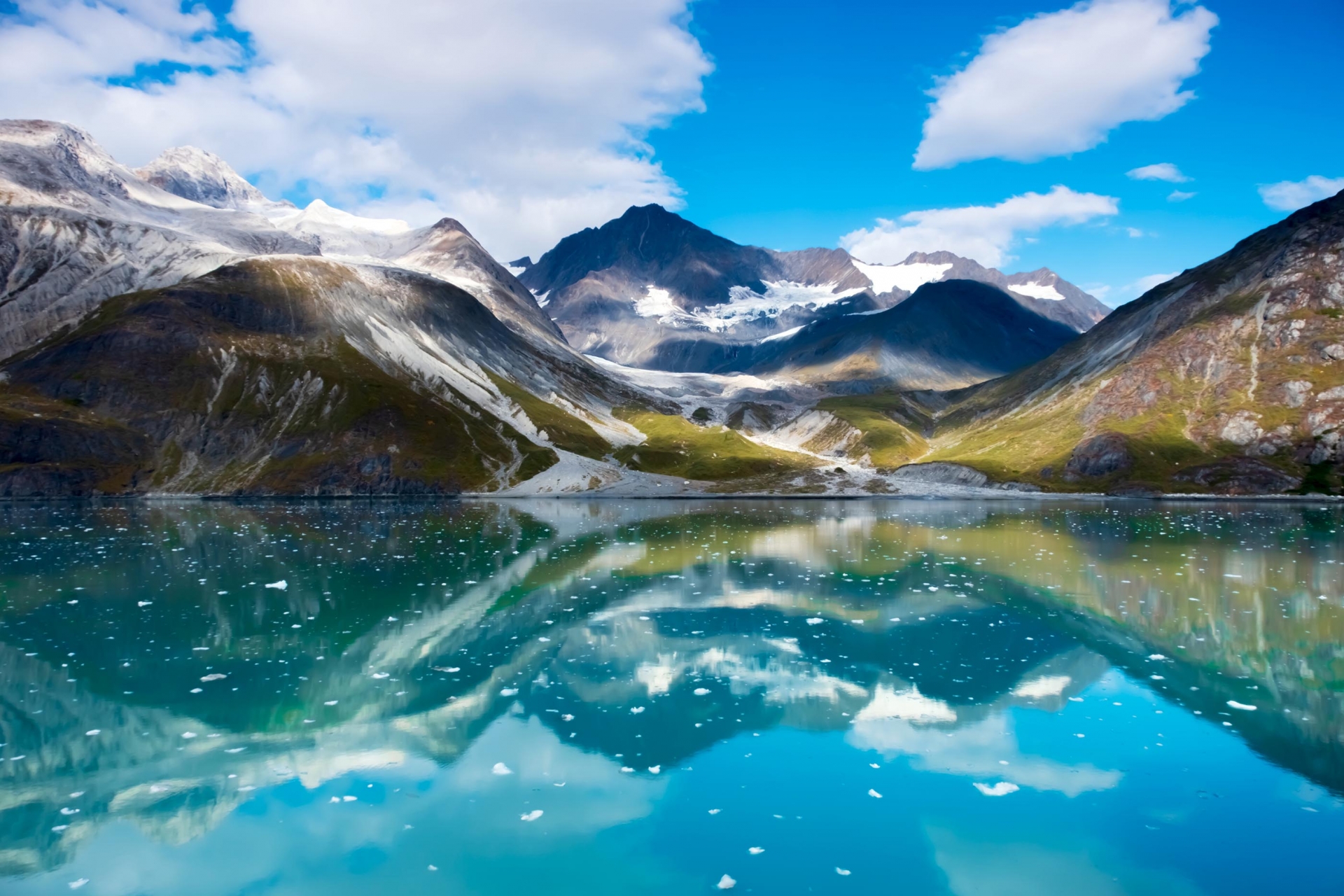 |
| Photo: Getty Images |
Alaska is a U.S. state located in the Western United States on the northwest extremity of North America. A semi-exclave of the U.S., it borders the Canadian province of British Columbia and the territory of Yukon to the east and shares a maritime border with the Russian Federation's Chukotka Autonomous Okrug to the west, just across the Bering Strait. To the north are the Chukchi and Beaufort seas of the Arctic Ocean, while the Pacific Ocean lies to the south and southwest.
Transportation
High costs of transportation continue to sap Alaska’s economic development, largely because the major transportation links, both internal and external, are by air, which provides the fastest way to cross Alaska’s great distances and formidable terrain. Numerous national airlines serve Alaska, and there are international airports at Anchorage, Fairbanks, Juneau, and Ketchikan. There are several other local airports of significance and hundreds of landing strips. In the 1990s Alaska became a central point for long-distance air cargo shipment connecting Asia, the United States, and Europe, and many American and European cargo airlines now fly through Anchorage and Fairbanks.
Most of the state’s major highways are surfaced, but gravel roads still exist. The Dalton Highway, a 414-mile (666-km) road paralleling the Trans-Alaska Pipeline, runs from Fairbanks to Prudhoe Bay and combines with the existing highway system to provide an overland route from the ice-free southern ports to the Arctic Ocean. The highway becomes more remote and rugged as it heads north, and the public is restricted in its use of that highway north of Disaster Creek (211 miles [340 km] from its starting point). The Alaska Highway was built during World War II and has been significantly improved by both Canada and the United States. It connects Dawson Creek, British Columbia, with Fairbanks.
Ocean shipping connects Seattle, Vancouver, and the trans-Canada railhead of Prince Rupert to towns in the panhandle and westward to the towns of Cordova, Valdez, Seward, and Kodiak. During the ice-free midsummer months, oceangoing vessels also call in Nome, Barrow, and Prudhoe Bay. Anchorage is Alaska’s major port for imports, while petroleum is exported from Kenai and Valdez, and fish are exported from southeast port cities, particularly Kodiak and Unalaska.
The Alaska Marine Highway (1963) is a ferry system with passenger and vehicle service that runs from Bellingham, Washington, or Prince Rupert, British Columbia, northward across the Gulf of Alaska, into Prince William Sound, and onto the Aleutian chain, making stops in more than 30 coastal towns and cities along the way. Many tourists take the ferries and disembark at Haines or Skagway, inland communities that provide access to highways where they can drive their vehicles farther into the mainland.
The state-owned and state-operated Alaska Railroad runs for about 500 miles (800 km), linking Seward, Anchorage, and Fairbanks. The White Pass and Yukon Route Railway (1898) operates from May through September and travels from Skagway into the Yukon territory.
Which city in Alaska has the highest gas prices?
The highest gas prices in Alaska can be found throughout Yukon-Koyukuk county, in cities and towns like Fort Yukon, Tanana, Ruby, Huslia, McGrath, and more. Here, prices average around a whopping $5.759.
Why are gas prices in Alaska so high?
Gas prices around the country are increasingly high, but why is Alaska suffering more than other states?
First, even though Alaska produces plenty of crude oil, it doesn’t get refined there. Instead, oil is transported to other states to be refined. The finished fuel and petroleum products are then shipped back up to Alaska—these extra shipping costs increase the price of gas.
Alaska’s inconsistent weather only makes this issue worse. Snow and icy roads can cause significant shipping delays, especially during the coldest months of the year. A single bad snowstorm can drive up the prices on the remaining supply until the weather breaks and new gas can arrive.
Alaskans who live in lesser-populated areas can see even higher gas prices as the roads leading to these small towns become more difficult to navigate. Supply is often lower than demand in these remote areas, meaning prices are likely to be high.
Tips to save gas driving in Alaska
Unfortunately, experts aren’t sure if and when gas prices will go down—so we’ll have to get used to increasingly high rates, at least for now. While it may not be practical to cut down on driving, it is possible to save on other car-related expenses to balance out your spending.
Here are some suggestions:
Stay on top of your vehicle’s maintenance: It may be tempting to try to save some cash by skipping out on regular maintenance, like oil changes and tire rotations. Don’t do this! Your car will run more efficiently when it’s in tip-top shape and staying on top of maintenance helps you avoid expensive issues down the road.
Learn some DIY car repair skills: You can save a significant amount of money if you learn to do some basic car maintenance by yourself. Just be sure to save the bigger projects for the professionals, unless you have ample mechanical expertise.
Refinance your car loan: If you’re like most people, your biggest car-related expense is your car loan. Jerry offers auto refinancing assistance to users who shopped for car insurance in the app. Lowering your interest rates could save you a significant amount of money each month.
Go electric: If you’re in the position to trade in your gas-guzzler, an all-electric or even a hybrid model could save you significant money on gas. Plus, Alaska offers electric vehicle incentives and owners can qualify for $8,500 in tax incentives.
7. District of Columbia
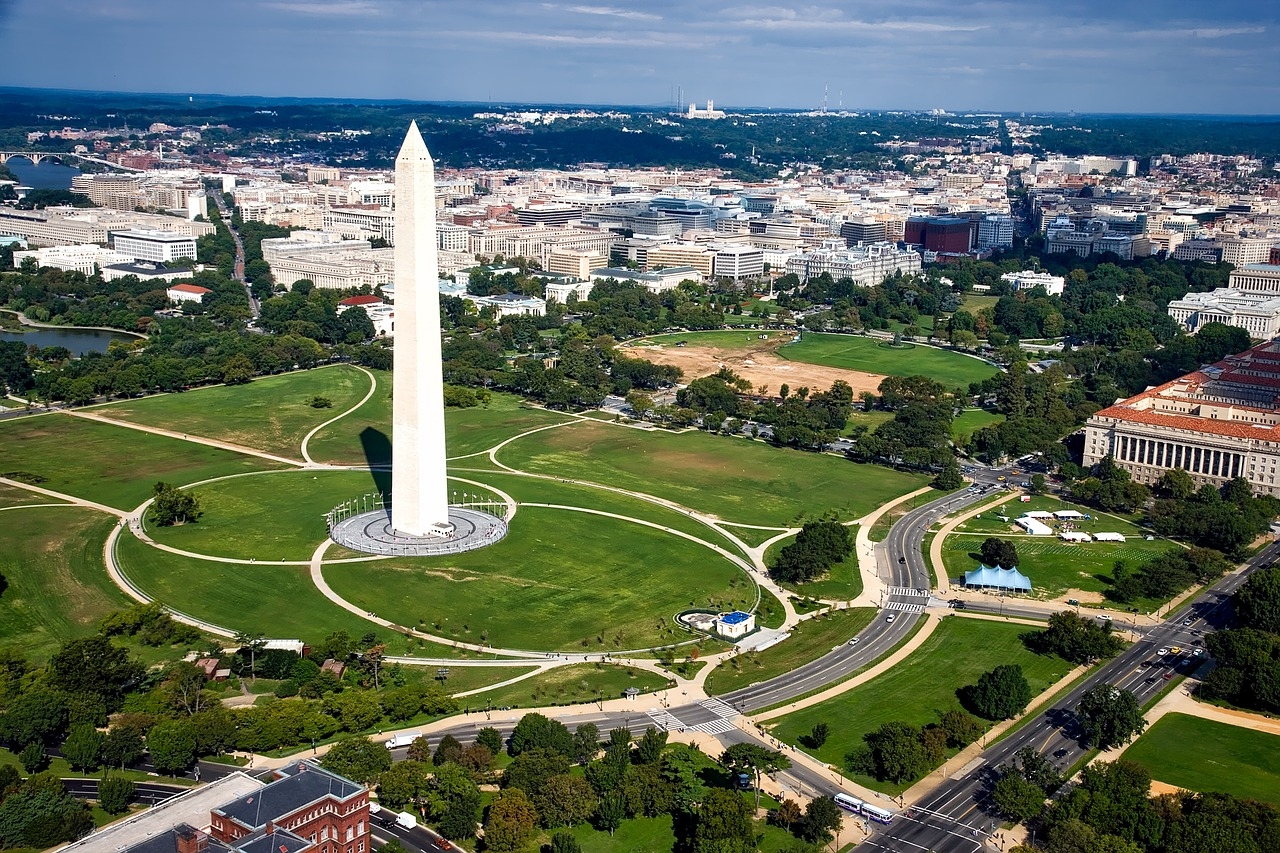 |
| Photo: Getty Images |
Washington, D.C., formally the District of Columbia, also known as just Washington or simply D.C., is the capital city and only federal district of the United States. It is located on the east bank of the Potomac River, which forms its southwestern and southern border with the U.S. state of Virginia, and it shares a land border with the U.S. state of Maryland on its remaining sides. The city was named for George Washington, a Founding Father and the first president of the United States, and the federal district is named after Columbia, a female personification of the nation. As the seat of the U.S. federal government and several international organizations, the city is an important world political capital.
Transportation of Washington, D.C.
Washington developed as a river port city at a time when ships were the principal means of transportation. The Potomac River empties into Chesapeake Bay, which flows to the Atlantic Ocean; this allowed oceangoing vessels to sail into the ports of Alexandria and Georgetown. To take advantage of the upper river above the Great Falls of the Potomac, George Washington started the Potomac Canal Company in the 1780s to circumnavigate the river’s falls, rapids, and shallows. In 1828 the Chesapeake and Ohio Canal bought the rights to the old Potomac Canal and extended it from Georgetown westward to Cumberland, Maryland. The canal was operational until 1924. In 1938 it was purchased by the federal government, with the prospect of draining, paving, and converting it into a parkway. In 1954 Supreme Court Justice William O. Douglas strongly supported a proposal to convert the canal into a public park, and with his help the canal and its towpath became a recreational area in the 1960s. In 1971 the area was designated a national park.
Railroads came to Washington in 1835. Horse-drawn streetcars were first used between Georgetown and the Navy Yard in 1860. By the 1880s electric streetcar lines had been laid throughout the city and into the outlying new “streetcar suburbs” of Maryland (Chevy Chase, Garret Park, Forest Glen, Glen Echo, and Tacoma Park). The streetcars remained in use until 1962, when buses replaced them on the cross-city routes.
The main highway in the region is the Capital Beltway, a 64-mile (103-km) interstate roadway encircling Washington and running through Maryland and Virginia. It is one of the country’s best-known highways and made famous the phrase “Inside the Beltway,” which refers, physically, to the city of Washington and its nearest suburbs and, metaphorically, to the political culture of the capital. The Beltway and other highways, parkways, and toll roads were built to help alleviate traffic congestion but have not been able to keep up with the area’s rapid population growth. The Potomac River bridges that connect Washington and Virginia have proved to be largely inadequate in number and capacity, though this situation has been relieved somewhat by the six-lane Woodrow Wilson Bridge connecting Alexandria, Virginia, to Prince George’s county, Maryland (completed in 2008 and replacing an earlier bridge of the same name). Moreover, the Anacostia River bridges are not sufficient to handle the amount of traffic between Downtown Washington and Southeast Washington and Maryland.
Public transportation combines a network of buses, both city and regional, with a rail transit system (the Metro) that opened its first stations in 1976. The Metro system is maintained by the Washington Metropolitan Area Transit Authority. Metro trains run on more than 100 miles (160 km) of track, above and below ground, and connect the nearby suburbs of Maryland and Virginia to Washington. The railroad network in and out of Washington links the city to other major cities throughout the United States as well as to the neighbouring bedroom communities for commuters. Washington’s historic Union Station, built in 1907 and renovated in 1987, is the primary arrival and departure point for all passengers on commuter, express, and long-distance trains.
Three major airports serve Washington. Ronald Reagan Washington National Airport lies about 4 miles (6.4 km) south of the city in Arlington, Virginia. Dulles International Airport is 26 miles (42 km) west of the city in Loudoun county, Virginia. Both Virginia airports were acquired in 1987 by the Metropolitan Washington Airports Authority. Baltimore-Washington International Thurgood Marshall Airport is about 30 miles (48 km) north of Washington, near Baltimore.
Why is gas price high in D.C?
Regionally, the cost of a gallon of gas currently ranges from $3.80 to $4.20, according to the app, but analysts at GasBuddy say prices will likely continue to climb given that demand typically increases during warmer months as travel season kicks off.
NPR reports that Russian oil has not yet been sanctioned directly because the United States and Europe are attempting to minimize the impact on their markets. Crude oil prices have still increased, however, as markets respond to fears of more direct sanctions. Russia exports about 7% of the world’s oil products.
During the State of the Union, President Joe Biden said he was working with dozens of other countries to release 60 million barrels of oil stocked in global reserves in an attempt to temper gas prices.
White House Press Secretary Jen Psaki outlined the government’s plan for energy security in light of current events in a Twitter thread, saying that the United States plans to increase its own oil production, including by taking advantage of thousands of unused drilling permits.
“Domestic production has not insulated us from the price volatility of fossil fuels or the whims of those who control them, such as President Putin. Americans know that,” Psaki wrote. “The only way to protect the US over the long term is to become energy independent. That is why the President is so focused on deploying clean energy technologies that don’t require fossil fuels bought and sold on the global market, which will always be vulnerable to bad actors.”
Psaki’s comments drew the ire of climate change activists, who called for reductions in oil and gas consumption instead of increased production.
Demand could already be reduced in comparison to previous crises, given the pandemic-induced transition to telework for many commuters in the D.C. area. While the exact number of people still working from home is unknown, it’s estimated that nearly 50% of the region’s jobs could be done remotely.
While some activists hope high gas prices could trigger a transition away from personal vehicle use, Metro found in 2014 that gas prices — high or low — had little correlation with ridership. Only one-third of riders said gas prices had any influence on their decision to ride.
8. Illinois
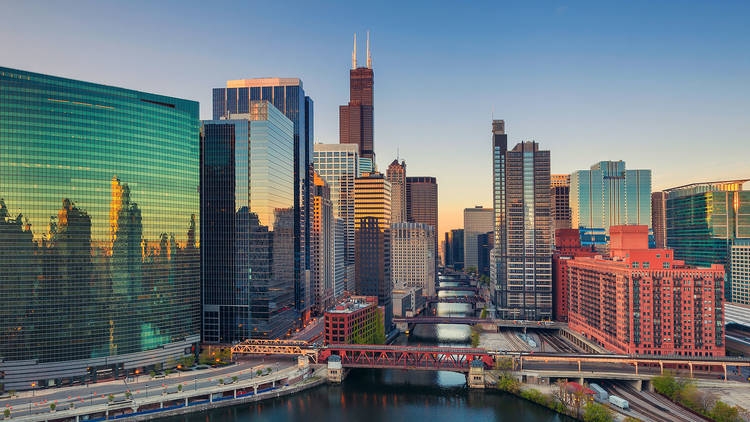 |
| Photo: Timeout |
Illinois is a state in the Midwestern United States. Chicago is its largest city, and the state's capital is Springfield; other major metropolitan areas include Metro East (of Greater St. Louis), Peoria and Rockford. Of the fifty U.S. states, Illinois has the fifth largest gross domestic product (GDP), the sixth largest population, and the 25th largest land area.
Transportation
Illinois is a national transportation hub. Few comparable areas are served by so many means of transportation. The state’s freight and passenger rail networks, radiating from Chicago, are among the most extensive in the country. Chicago is a major centre for Amtrak service and of a large commuter rail system. Chicago is also one of the principal hubs of the national road system, and each of the state’s major urban areas is served by at least one interstate highway.
Water transportation became more efficient when Lake Michigan was connected to the Mississippi River in 1848 by means of the Illinois and Michigan Canal, linking the Chicago and Illinois rivers. Completion of the St. Lawrence Seaway in 1959 stimulated the expansion of the Port of Chicago. Oceangoing freighters dock at Calumet Harbor in South Chicago.
Chicago has two major airports, O’Hare International—one of the busiest in the country—and Midway; a third airport, Meigs Field, which served small planes on the Chicago lakefront, was closed down in 2003 by Mayor Richard M. Daley. Regional airports are located at Champaign-Urbana, Bloomington-Normal, Springfield, and other cities. In all, about 700 airports are located throughout the state.
Why are gas prices in Illinois so high?
Although prices are on the rise nationwide, drivers in Louisiana and Mississippi are paying under $4.10 per gallon on average—so why are prices in Illinois so high?
Well, the answer is quite complex. First, there are higher taxes imposed in Illinois on gas than in other states. In fact, the state raised its tax on motor fuel on July 1, 2021, to 39.2 cents per gallon. This tax is on top of the federal tax, which is 18.4 cents/gallon. Additionally, individual municipalities are able to assess their own taxes, too.
Another factor could be the state-wide switchover from a blend of gas that’s used in the winter to a blend of gas that’s more appropriate for the summer. This changeover occurs because the Chicago metro area is under federal Environmental Protection Agency standards that mandate cleaner-burning blends during the warmer months to reduce environmental impact. This safer blend is more expensive, so Illinois residents typically see a slight hike in gas prices every spring.
Finally, the location of the refineries supplying gas to local stations has an effect on state-wide prices. Since most refineries are concentrated in a single area of the state, they have to ship gas far and wide to reach every county. The farther the shipping, the higher the price.
How to deal with Illinois’s gas prices
So how can you cope with these rising gas prices—especially with no end in sight? After all, you can’t abandon your vehicle, especially if you don’t live near public transportation. But it’s also not practical to dump your entire paycheck into your gas tank.
Here are some tips for saving money while gas prices are high:
Stay on top of maintenance: Your regular oil change might feel like an added expense that you can skip out on to save some cash, but it’s imperative that you do not. Your car will run most efficiently when it’s well-maintained, and keeping up on basic car care will help you avoid expensive mechanical issues later on.
Learn some DIY car repair skills: While going to a professional may be necessary when facing serious mechanical issues, you may be able to reduce your ownership expenses by learning some basic car maintenance skills.
Refinance your car loan: Jerry offers refinance services to users who shop for insurance in the app! This means that you could potentially lower your monthly car payment by refinancing with a different lender.
Go electric: Switching to a hybrid or electric vehicle won’t just allow you to save big on the pump—you could also cash in on Illinois’ electric vehicle inventive.
Switch insurance companies: Did you know that experts recommend shopping for a new car insurance policy every six months? That’s because insurance prices ebb and flow just like gas prices. If you use Jerry, the super app will automatically shop for new policies and provide you with quotes twice a year.
9. New York
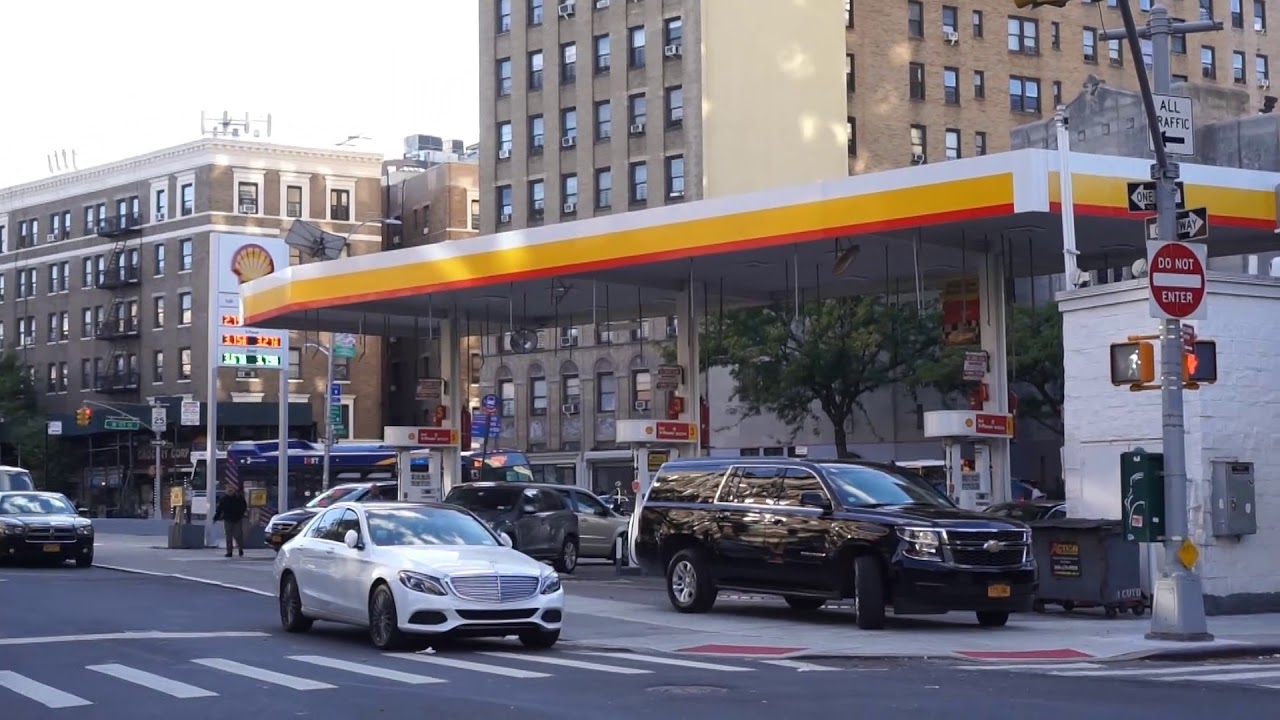 |
| Photo: Travel and Adventure |
New York, officially known as the State of New York, is a state in the Northeastern United States. It is sometimes called New York State to distinguish it from its largest city, New York City. With a total area of 54,556 square miles (141,300 km2), New York is the 27th largest U.S. state geographically. With 20.2 million residents, it is the fourth most populous state in the United States as of 2021, with approximately 44% living in New York City and another 14% on the remainder of Long Island.
Transportation
A great part of New York’s economic advantage is its location on important natural transportation routes and facilities that connect urban centres within and without the state.
The Erie Canal, opened in 1825, tied New York City and its port to Buffalo and the westward-expanding country. The main railroad system followed the route of the canal, with feeder lines that jutted north and south into the remainder of the state. After World War II the limited-access Thruway stretched from New York to the Pennsylvania state line, passing through Albany, Utica, Syracuse, Rochester, and Buffalo. The basic paths of these main transportation routes are not substantially different from those that were used by the state’s original settlers.
With the completion in 1918 of the New York State Barge Canal System (now called the New York State Canal System), which incorporated the old Erie Canal, New York had the country’s most extensive inland waterway system. The canal system stretches some 520 miles (840 km) and has more than 50 locks. Although it is an important means for moving bulk goods—particularly petroleum products, a major share of the freight hauled—the tonnage it carries annually has dropped considerably.
The railways first challenged the supremacy of the canal as a carrier of goods. Beginning in the mid-19th century with the establishment of the New York Central Railroad, a system was built that tied New York’s major cities to Chicago, Boston, Montreal, and other urban centres. Although the number of passengers carried has declined, the railroads remain important handlers of freight. Much of this freight originates via the facilities of the Port Authority of New York and New Jersey, still one of the largest and busiest port complexes in the United States, handling about one-tenth of all the country’s imports and a large proportion of all immigrants to the United States.
Central to the highway system are the limited-access highways. The Thruway connects at Albany to the Adirondack Northway, which extends northward to Canada. In central New York a major highway runs from the Pennsylvania state line to Canada, passing through Binghamton, Syracuse, and Watertown. At Syracuse this route intersects with the Thruway, maintaining the city as a transportation hub and accounting in large part for its economic viability. Another limited-access expressway extends across the southern tier of the state. On Long Island a set of east-west highways ties the island to New York City, New England, and upstate New York.
The New York City metropolitan area, with its combination of subways, buses, and railroads, has the most complex commuter system in the country. The vast New York transit system provides intracity passenger transport. Commuter railroads serve suburban Long Island, Westchester county, New Jersey, and Connecticut. Many of these transportation networks were brought under the control of a single agency, the Metropolitan Transportation Authority, in 1968.
The three largest airports in the New York City metropolitan area are John F. Kennedy International, La Guardia, and Newark Liberty International, in New Jersey. Other airports providing national and international service are located in Albany, Buffalo, Islip, Rochester, and Syracuse, among others, and the state has a number of regional and county airports.
Why are gas prices rising?
Prices steadily rose across New York through the first few months of this year, starting at around $3.50 statewide in early January and breaching the $4 per gallon mark in early March.
But Russia’s attack on Ukraine intensified already-existing inflation, drove oil prices up and snarled supply chains globally. New Yorkers are feeling the effects of these events on their wallets.
According to the latest data from the Energy Information Administration, domestic gasoline stocks decreased while gasoline demand increased. Tighter supply and increased demand have pushed pump prices even higher. This supply/demand dynamic, combined with volatile crude prices, will likely continue to keep upward pressure on pump prices, according to AAA.
Oil prices were more than $110 per barrel Monday morning, according to AAA. Last week, crude prices dropped temporarily over market concerns about the possibility of a recession. (If a recession occurs, crude demand would likely decrease amid slower economic activity.) Crude prices last week also recovered, then increased over geopolitical concerns involving Russia and Ukraine.
Memorial Day weekend travel
Despite the historic gas prices, more than $34.9 million Americans are expected to hit the road this holiday weekend, with what's predicted to be the busiest holiday weekend on the roads in two years.
Flexibility is important when considering Memorial Day travel plans — aim to travel on off-peak times or days, pick a hidden gem closer to home or opt to stay at an all-inclusive resort with plenty of on-site activities. This limits the need for a rental car and paying a la carte for entertainment and dining.
Tips to save money at the pump
- Fill up at Costco, Sam's Club, Walmart and Kroger: Wholesale club stores Costco and Sam’s Club and grocery stores such as Kroger offer discounted gas. Typically, you need to buy a membership or enroll in a discount program. Using the Walmart app, Walmart+ members get a 5 cents a gallon discount and access to member prices at Sam's Club.
- Pay in cash at the pump: You can save 5 to 10 cents a gallon when you pay in cash. That can add up over time, averaging about $1 in savings each time you fill up a 12-gallon tank, according to GasBuddy. But beware of gas stations that charge a surcharge for using a credit card, because they may charge higher prices.
- Get points, cash back from credit cards: GasBuddy says most people prefer to pay with a credit card. Less than 6% of drivers pay with cash when they fill up their tanks, a GasBuddy study found. Gas cards and gas reward credit cards provide much larger discounts than cash. Check to see if your credit card has any deals on gas purchases. Some will give you double points or cash back. For example, you can get 3% cash back at gas stations with the Blue Cash Preferred Card from American Express. One of the best is the Sam's Club Mastercard, which will give you 5% cash back on gas, up to $6,000.
- Sign up for gas loyalty programs: Sign up for loyalty programs and gas cards, GasBuddy recommends. Nearly all gas stations have a loyalty program. You can often link those rewards accounts to a gas card. 7-Eleven has a program that gives you a discount of 11 cents a gallon for the first seven fill-ups on all fuel grades.
- Best time of day and week to buy gas: According to GasBuddy, the best day to save money at the pump is Monday, which has the lowest average gas prices in most of the country. The most expensive days in most states? Thursday, followed by Wednesday. GasBuddy estimates you can save $50 to $100 a year by filling up on the cheapest days of the week. You can check the GasBuddy site (gasbuddy.com) for the cheapest and most expensive days of the week for your state.
- Earn free gas cards: You can earn free gas gift cards by taking surveys for apps like Swagbucks and Survey Junkie, but be prepared to spend a good deal of time and to hand over a lot of personal information such as your age, job, income and shopping habits.
- Improve fuel efficiency: Don’t speed. Fuel economy peaks at around 50 mph on most cars. Reducing highway speeds by 5 to 10 mph can increase fuel economy by as much as 14%, according to AAA. Also, don’t brake hard or aggressively accelerate as both of those burn gas faster, GasBuddy says. Turn off your A/C and roll down the windows. Keep up with vehicle maintenance and do routine inspections, AAA says. Make sure your tires are properly inflated. And, travel light. Take anything you don’t need out of your vehicle. For every 100 pounds you carry around, you lose 1% to 2% in fuel efficiency, or 8 cents a gallon, according to Gillis.
- Fill your tank with regular, not premium: If regular gas is all that’s recommended for your vehicle, then that’s all you need, AAA says. Filling up on premium doesn’t improve your fuel economy and just costs you more money.
- Drive less: Plan ahead. Map your route before you leave, AAA recommends. Take the most fuel-efficient route on Google Maps. Combine errands to avoid extra trips. Avoid rush hour and anticipate road conditions. Shut off your engine if you will be stopped for more than a minute. According to AAA, a car engine consumes one quarter to one-half gallon of fuel per hour when idling. A warm engine only takes about 10 seconds' worth of fuel to restart.
10. Arizona
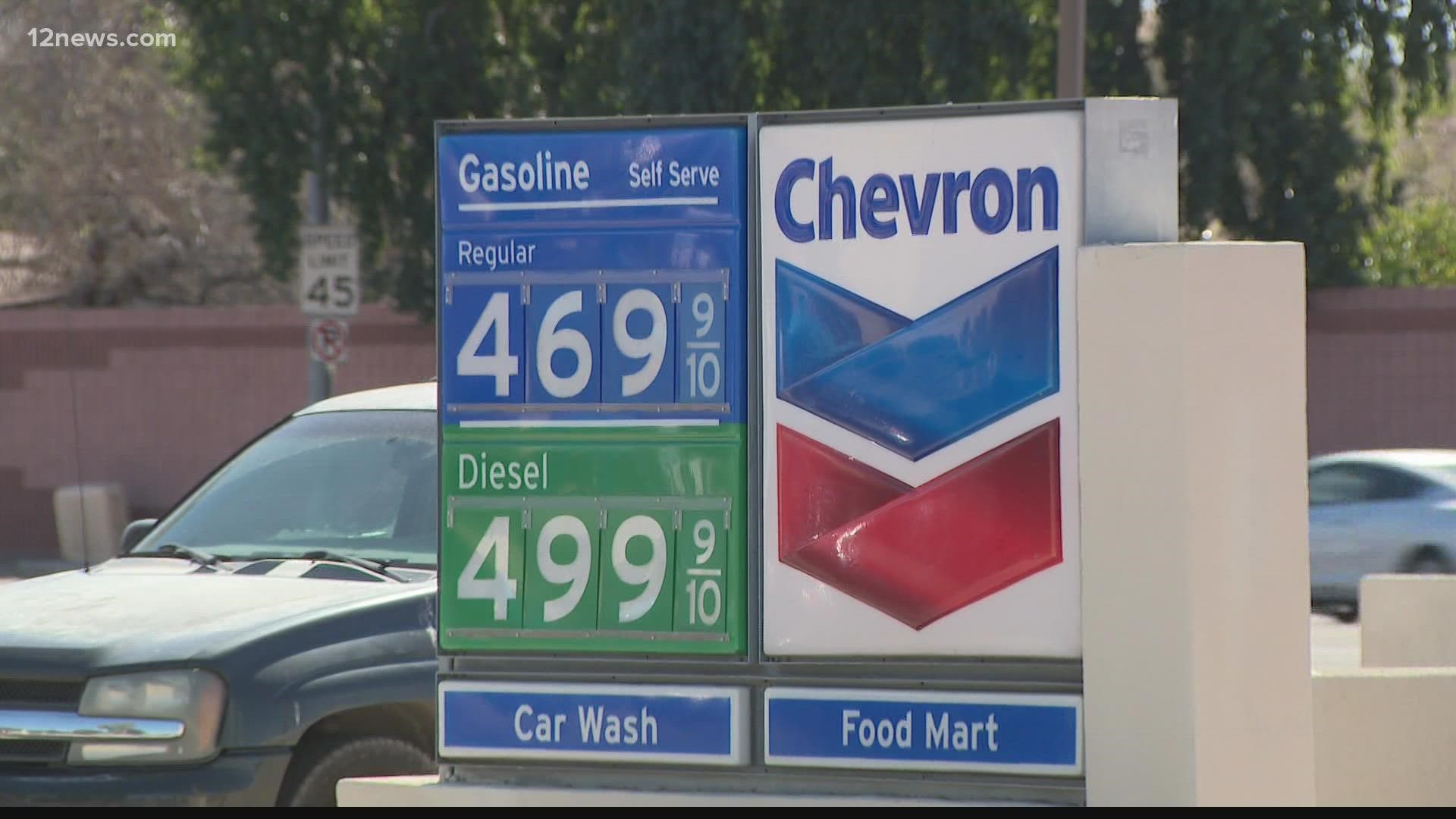 |
| Photo: 12 News |
Arizona is a state in the Western United States, grouped in the Southwestern and occasionally Mountain subregions. It is the 6th largest and the 14th most populous of the 50 states. Its capital and largest city is Phoenix. Arizona shares the Four Corners region with Utah to the north, Colorado to the northeast, and New Mexico to the east; its other neighboring states are Nevada to the northwest and California to the west and the Mexican states of Sonora and Baja California to the south and southwest.
Arizona is home to a diverse population. About one-quarter of the state is made up of Indian reservations that serve as the home of 27 federally recognized Native American tribes, including the Navajo Nation, the largest in the state and the United States, with more than 300,000 citizens. Since the 1980s, the proportion of Hispanics in the state's population has grown significantly owing to migration from Mexico. In terms of religion, a substantial portion of the population are followers of the Catholic Church and The Church of Jesus Christ of Latter-day Saints (LDS Church).
Transportation
Like other western states, Arizona has not emphasized the development of mass transit systems, and state and municipal governments struggle to build sufficient roads to accommodate a swelling population. It has long been so. The state’s earliest service industry was long-distance cartage over rough desert and mountain country; in modern times, the five interstate highways that pass through Arizona are crowded with heavy trucks. These highways generally follow historic roads, most of which were established along Native American trade routes and accommodated stagecoaches and freight carriers. The railroads followed in the later 19th century, with well-established east-west routes passing through southern and northern Arizona, but there was little service to the rugged interior. A greater focus on mass transit development was evident in the state’s larger cities in the early 21st century. A light-rail system that served Phoenix and the surrounding areas began operating in 2008, and Tucson launched a streetcar service in 2014.
Surface transportation is generally organized on the model of southern California, with streets on a grid pattern punctuated by freeways and highways. Within the cities some attention has been given to the development of bicycle paths. Phoenix’s Sky Harbor International Airport offers nonstop international and domestic flights; Tucson International Airport provides more-limited nonstop flights; and Flagstaff and Yuma airports have fewer still. Many other towns have airports capable of accommodating small jet aircraft, and there are numerous military airfields as well.
Why are gas prices in Arizona so high?
So, what makes Arizona’s gas prices so high? A lot of it has to do with geography.
Most of the country’s oil refineries are found on the East Coast. That means oil supply is generally higher in the East than it is in the West, and so prices will be higher where supply is low. Arizona also has very little crude oil production of its own and must rely on expensive oil imports from California and Texas.
Another factor affecting the price of gasoline has been the war in Ukraine. In early March, the US and many other countries including the UK and Canada agreed to ban Russian oil imports. Unfortunately, Russia is among the world’s largest oil producers and banning Russian oil amounts to a reduction in available supply for the United States.
Gas prices have also been heavily affected by the COVID-19 pandemic. Nation-wide shut-downs and quarantines led to a massive reduction in demand—and therefore, supply—of oil and gas. As a result, the production of oil and gas products was significantly reduced in 2020. As restrictions began to lift, demand for gas increased, but supply was low due to reduced production, causing prices to go up.
Fuel taxes contribute to the cost of gas as well. Arizona actually has one of the lowest state fuel taxes in the country. Still, federal and state fuel taxes in Arizona add 36.4 cents per gallon to the cost of gas. The highest state fuel tax is found in California—66.98 cents per gallon.
Recently, the Biden administration has considered increasing the amount of ethanol in the country’s gasoline, which would reduce the cost of gasoline at the pump. This is misleading, however, as ethanol-blended gasoline is less efficient. So, while you may pay less per gallon at the pump, you’ll also go shorter distances per gallon, and will likely find yourself filling up your tank more often.
That’s bad news for drivers with longer commutes who already burn more gas. Arizonans who spend more time in their car will likely see the effect of less efficient fuel. These are the Arizona cities that experience the longest average commute times:
San Tan Valley: 74.8-minute average round-trip commute
Waddell: 73.6-minute average round-trip commute
Marana: 72.8-minute average round-trip commute
Maricopa: 70.4-minute average round-trip commute
These long daily commutes drive up the demand for gas and cause fuel prices to skyrocket.
How to deal with Arizona’s gas prices
So what is the best way to deal with high gas prices? Should you pack up the wagons and leave Arizona behind, or just accept the fact that pouring thousands of dollars into your gas tank is the new normal?
Maybe not. Gas prices in Arizona might be a little out of hand right now, but there are some things that you can do to soften the financial blow. Below are some money-saving hacks that can help you absorb the high Arizona gas prices.
Keep your car properly maintained: When filling up your gas tank costs you $60 to $90 a pop, you might be tempted to cut corners by skipping things like $30 oil changes. This would be a big mistake. Regular maintenance can prevent bigger, costlier problems from occurring in the future.
Do small repairs yourself: While you want to leave the more complicated mechanical work to a trained professional, learning to do small fixes like replacing filters and tail lights can save you money.
Get an electric car: High gas prices can’t hurt you if your car doesn’t need it. Not only will switching to an electric car save you money on gas, but it could also earn you a $7,500 federal tax credit.
Switch insurance providers: A lot of car owners pay more than they need to on car insurance. You can reduce your insurance costs by shopping around and switching to a provider that offers a better rate for the coverage you need.
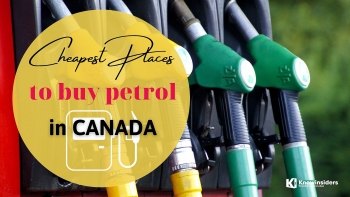 Top 10 Cheapest Places To Buy Petrol And Diesel In Canada Top 10 Cheapest Places To Buy Petrol And Diesel In Canada Let's check top 10 cheapest places to buy petrol and gas in Canada. |
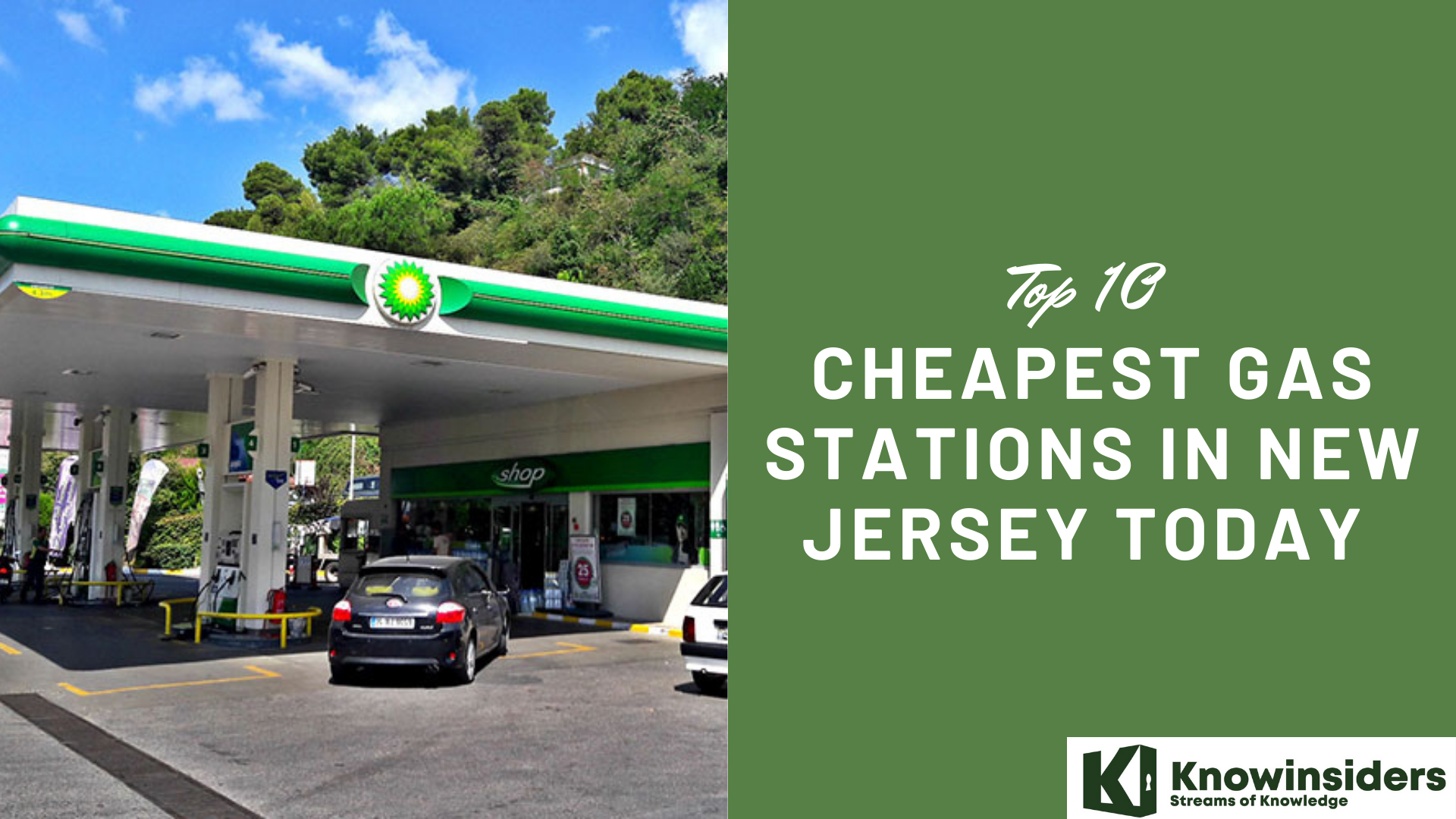 Top 10 Cheapest Gas Stations In New Jersey That You Keep in Mind Top 10 Cheapest Gas Stations In New Jersey That You Keep in Mind With New Jersey being one of the states with the highest gas prices in the United States, these are the 10 cheapest gas stations you ... |
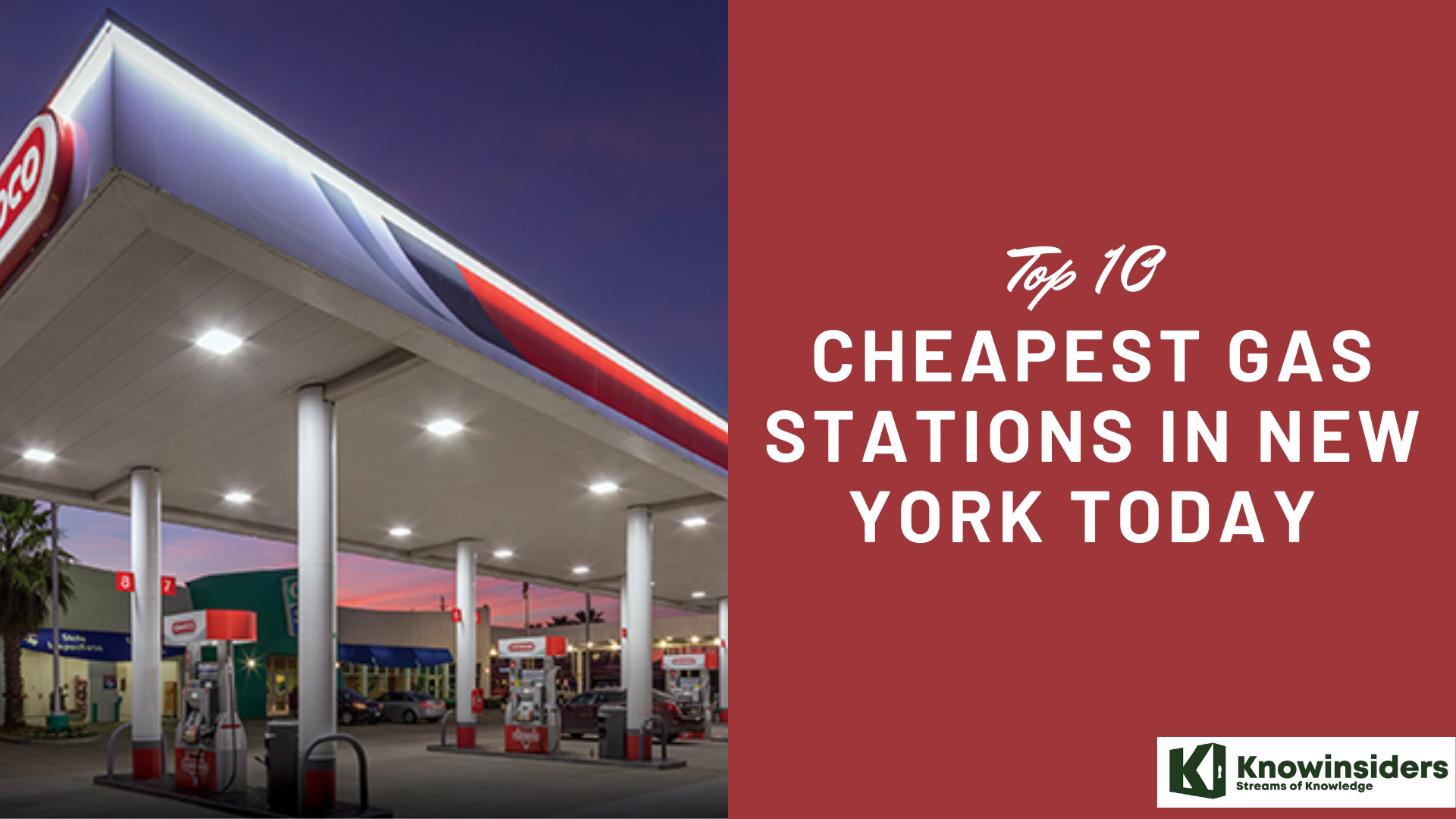 Top 10 Cheapest Gas Stations In New York That You Keep in Mind Top 10 Cheapest Gas Stations In New York That You Keep in Mind With New York being one of the states that have the highest gas prices ever, these cheapest gas stations will help you save some pennies. |
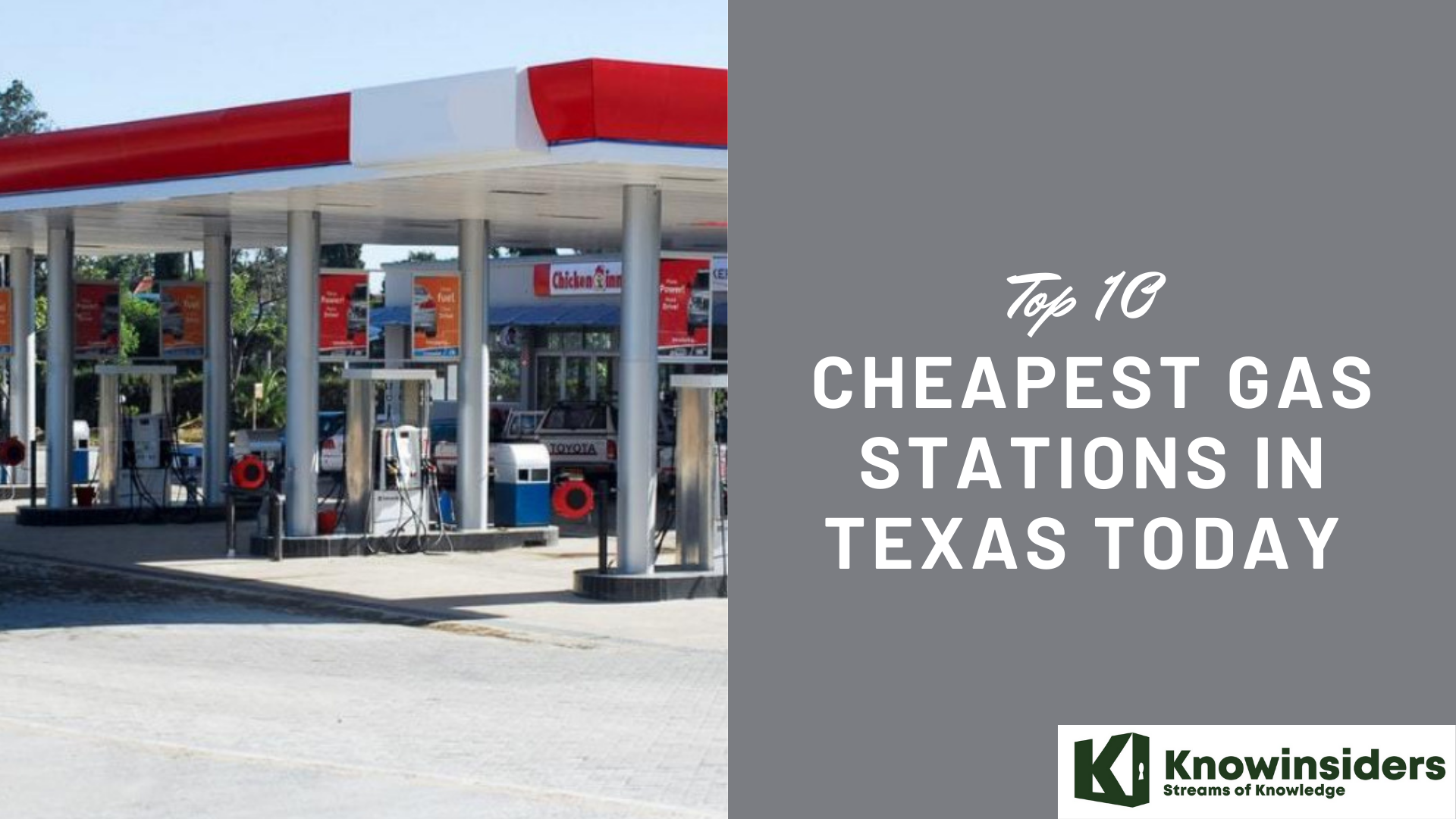 Top 10 Cheapest Gas Stations In Texas That You Keep in Mind Top 10 Cheapest Gas Stations In Texas That You Keep in Mind Take a look at the article below for the cheapest gas stations in Texas and more information on the gas prices in this state. |


























